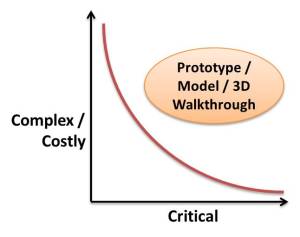When is Extra Design Effort Required?
May 29, 2010
There are certain components of every landscape design that you absolutely have to get right. Hardscape comes to mind as something that has to be right. This means not only constructed correctly but also designed right. You just can’t easily rip it out and redo it. Although in the case of a contractor error, this can happen. The point being that there are elements that are very high priority. Hardscape is high priority because it is expensive, time consuming, and very hard to change or replace once installed. Other elements of the design may be critically important. Preserving a view of a lake, a mountain range, or a city skyline might be critically important to the client. If your design blocks that view, you have failed the client.
Finding or creating the perfect focal point for a backyard may be a significant element in your design. Without that focal point, the design may not be as aesthetically pleasing or may look incomplete. That focal point probably isn’t critical though. In most cases, it can be replaced with something else assuming it isn’t hardscape.
The elements that are costly, complex, and /or critical require us to take extra effort to design them right and present them right. Showing the client your design that includes how the view of the lake or mountains is incorporated helps you sell the design. It also supplies you with the validation that you have met that client requirement. Walking the client through a design that shows and demonstrates how the walkway, patio, or deck functions and meets their needs is also a validation technique. If the walkthrough convinces the client, you have validated that part of the design. It also solicits the client’s buy-in that the design will work.
When something is complex/costly (hardscape) and/or critical (high priority) then a prototype, model, 3D walkthrough, or some other type of detailed rendering should be used. This correctly implies that extra design effort is necessary to address the complexity /costliness and/or critical nature of the element. It also supplies a validation technique to help assure that your design addresses the client’s needs completely and correctly. The graphic below represents the boundary between critical and costly/complex that you need to monitor. Anything to the upper right of the curve is a candidate for extra design analysis and conceptual development as well as presentation.
The premise of this blog is to advocate making sure that a design will work for a client before construction begins. In short, avoiding design mistakes. Dealing with elements that are complex or costly such as hardscape, or elements that are crucial such as preserving a view demand extra attention and effort to validate that they really are right for the client and the site.

 RSS Feed
RSS Feed